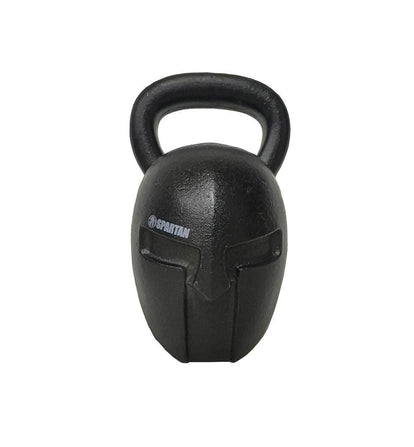4 Tips to Build Your Own Kettlebell Flow Like a Pro

While you can’t rely on kettlebell flows alone to get you seriously fit, they should be a part of your workout repertoire. Why? Well, for a few good reasons.
First, turning your typically strength-based KB routine into a flow surprises your body, and variety is a solid way to stay on your toes and build strength, no matter your fitness goals. Second, they can help with coordination and the mind-muscle connection since you have to be locked in mentally and physically to flow through a series of movement patterns. Third, they’re fun and cool — and those are two elements that shouldn’t be so quickly overlooked, according to Sam Stauffer, Spartan’s Director of Training.
How to Craft Your Own DIY Kettlebell Flow
Check out Spartan Coach Trevor Franklin’s kettlebell flow-inspired VOD (video of the day) on the Spartan Fit app to get inspired. Then, consider a DIY approach to creating your own kettlebell flow, factoring in these guidelines:
1. Go Down a Bell Size

“Start with a kettlebell that's a little bit lighter than you normally use and see how that feels,” says Stauffer, adding that the weight should challenge you, but not break down your form. “That'll give you a baseline of, ‘That felt pretty good,’ or, ‘That didn't feel good at all, and my form was terrible,’ and you can adjust from there.”
Related: Do This Differently: Workout Hacks to Master the Kettlebell Swing
2. Don’t Skip the Warm Up
Stauffer recommends a dynamic bodyweight warm up. “You'll find that a lot of people use the kettlebell in their warm up, and I can't say that that's a hundred percent wrong, but I think you're asking for trouble,” he says. “The idea behind a warm up is to prepare your body for the workout.” Try one of the dynamic warm-ups on Spartan Fit before getting after it.
3. Pick the Right Moves, In the Right Order

“The important thing for a kettlebell flow is finding moves that make sense,” says Stauffer. Choosing five random KB moves and flowing them together probably isn’t going to work. Use these fundamentals instead of winging it.
Start with the KB clean + press + squat.
“One flow that I like is the kettlebell clean to press to squat,” says Stauffer. Then, customize it. “You can add a press after the squat, before the squat, or both,” Stauffer says.
Use swings to transition.
“You can transition the double or single-arm swing pretty easily,” he notes. “You can swing right into a snatch or a clean.”
Rack first, then flow.
“Once you get into that racked position, which can typically be done by either cleaning it up, or deadlifting and then readjusting, your options for movement really open up,” Stauffer says. “You can lunge, you can side-lunge, you can squat, you can overhead press, you can swing, you can squat thrust.”
4. Do More Rounds Than Reps
Let’s take the first example above: the KB clean + press + squat. Stauffer recommends doing just one rep each (on each side) on the first round, two reps on round two, three reps on round three, and up the ladder you go. But don’t surpass four reps. “I guarantee you, once you get to four of each, you're going to be burnt.”











